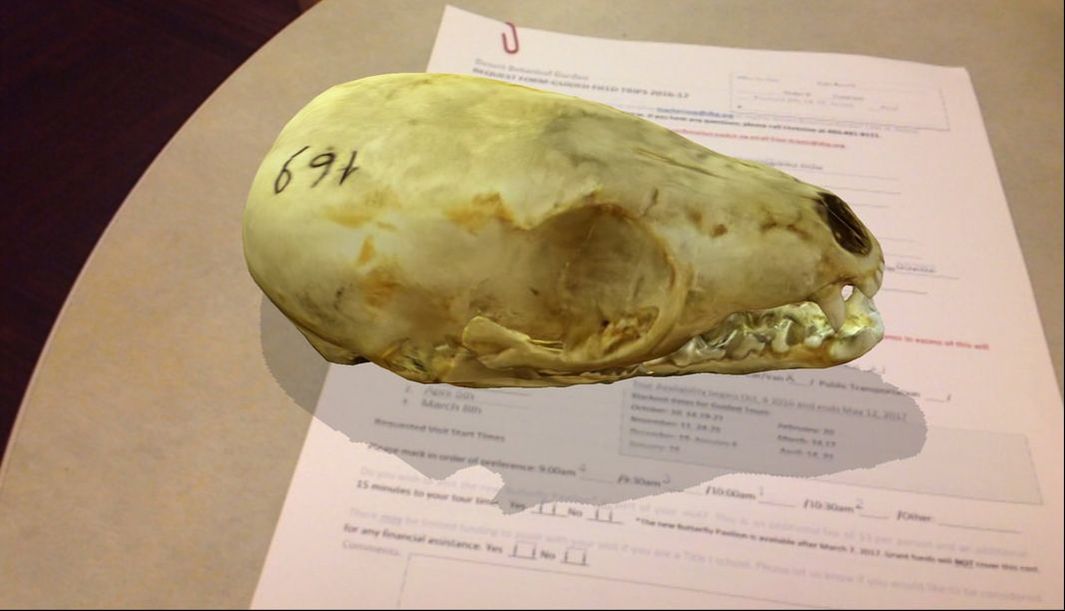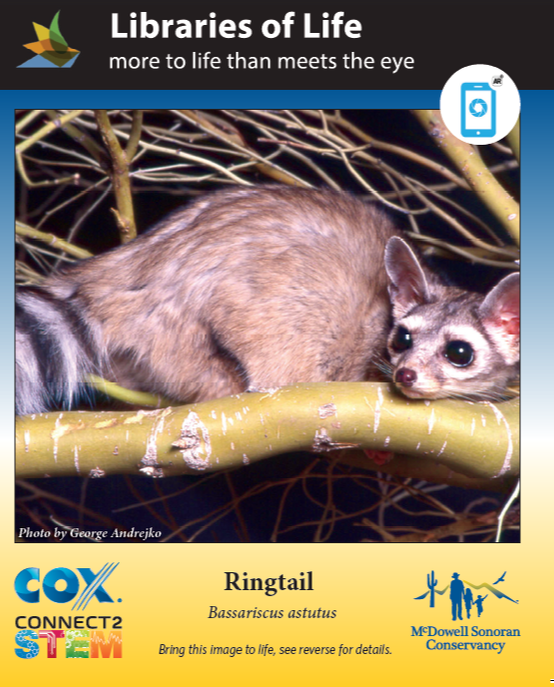RingTAIL CAT: Did you know?
|
Click on link to download card
Bassariscus astutus |
The Ringtail cat is not a cat at all. It is a member of the Procyonidae, an animal family that includes raccoons and coati mundi, animals that also live in the Sonoran Desert. All three of these creatures have long, black and white- striped tails.
Many people live in the Sonoran Desert their whole lives and never see a Ringtail. This is because they are nocturnal, meaning they are active at night and sleep during the day. When you look at a Ringtail you may notice it’s unusually large eyes. These helps it see in the dark. Look at your ringtail skull and notice the size of the eye sockets. They need to be this big, to hold such large eyes! Not only are Ringtails nocturnal, they also spend most of their time in rocky outcrops that are hard for humans to get to. This helps keep them safe from predators. Ringtails have a special adaptation to their rocky environment. They can rotate their feet 180 degrees, which helps them climb rocks, especially when they need to climb straight down head first! Another adaptation is their long tail, which they use for balance while climbing and leaping across the rocks. Ringtails are omnivores, meaning they eat both meat and plants. If you look at their skull, you can see both sharp, pointy teeth and larger, flat teeth. The pointy teeth are for biting and tearing meat, and the larger, flat teeth are for grinding plants. Ringtails will eat everything from mice, centipedes, carrion, birds, and plants. |


